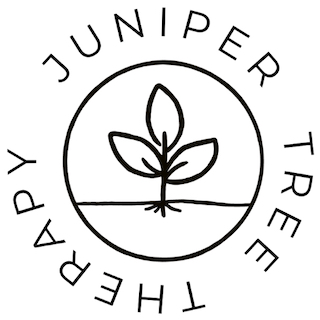In September, 32 parent carers joined us at the Vinery Centre for an ARFID coffee morning with Juniper Tree Therapy. Together, we explored what ARFID is, why it happens, and practical strategies to support children and young people.
This event builds on our Health subgroup’s ongoing work, following a popular session at Leeds Local Offer Live earlier this year and our earlier blog post, Understanding ARFID: Support and Resources for Families.
Why This Event Matters
Families told us they face fragmented support for ARFID, with no clear pathways to access the support they need. locally or nationally. Leeds PCF is working to change this by:
- Amplifying parent voices.
- Building a supportive community.
- Collaborating with health colleagues to improve understanding and services.
This situation in Leeds is reflective of the national picture for support for ARFID, with very few dedicated pathways available nationally.
At Leeds PCF, our mission is to build a community for parents and carers across the city and empower them so that their voices are heard. Whilst meaningful change is often a gradual process, we’re working hard to ensure that the concerns of parents and carers are acknowledged and understood. This session arose from the voices of parents and carers, alerting us and our health colleagues to the issues they were facing.
Key Insights from Juniper Tree Therapy
Juniper Tree Therapy is a small team of Occupational Therapists based in Yorkshire. They have extensive experience working with children, young people, and their families or carers, and offer therapy, training and consultancy. They are an independent provider, but are regularly commissioned by health, education and social care authorities.
At the event, Occupational Therapist Emma Smith and her team shared essential knowledge about ARFID. Importantly, this includes the fact that ARFID is not “picky eating” or manipulation – common accusations levelled at children and their parent carers.
ARFID is:
- A nervous system response
- Self-protection
- A signalling interoceptive experience
- A need for safety, not compliance
Here is a brief overview of some of the concepts discussed – some further resources can be found at the end of this blog post.
Understanding ARFID: Key Concepts
Eating involves multiple sensory systems- taste, smell, touch, movement, and internal signals. When these systems become over sensitive, eating can feel unsafe.
- Vestibular: Movement affects muscle tone and attention, influencing eating readiness.
- Proprioceptive: Activities like pushing or lifting before meals can help regulate arousal.
- Tactile: Texture and temperature can trigger survival responses, especially for autistic individuals.
- Visual & Auditory: Familiar visuals and reducing eating-related sounds can prevent overload.
- Interoception: Awareness of internal states (e.g., hunger, toileting) can be disrupted.
- Olfactory & Gustatory: Smell and taste strongly influence safety signals.
Difficulties with Sensory Processing
Challenges fall into three areas:
- Modulation – Over- or under-reacting to sensory input
- Discrimination – Difficulty distinguishing textures or tastes
- Praxis – Struggling to plan and automate eating movements, leading to fatigue
Neuroplasticity
The brain can change over time. Pairing positive sensory experiences with eating helps build new, safer associations.
Polyvagal Theory (Stephen Porges)
We can’t feel safe and in danger at the same time. When a child is in fight-or-flight mode, eating feels impossible. Creating safety – through calm environments and trusted people – is key.
Signs of state:
- Fight/Flight: Agitation, constant movement
- Freeze: Withdrawal
Practical Strategies
- Mealtime connection: Focus on safety and comfort-consider when, where, and who works best for your child. Consider the When (time of day when sensory and emotional thresholds are more receptive/calm), Where (can you eat and walk if sitting still is an issue?) and Who (who is the trusted person? Siblings or not?) that works for your child Start from a place of safety – in terms of texture, colour, shape, brand. Protect mealtimes if necessary.
- Calming experiences: Activities like climbing, pushing, or stretching; chewy or crunchy snacks before meals; sucking thick liquids such as smoothies or milkshakes through a straw, and sitting on a slightly deflated gym ball rather than a chair – these can all help to regulate the nervous system.
- Regulation tips: Quiet voices, slow movements, soft lighting. And don’t forget, parents and carers need to consider their own regulation before their child’s.
- Alerting experiences: Walking, rocking, swinging; sour, fizzy, tangy, minty or spicy flavours, and music before eating.
- Remove previous negative associations, for example, if eating at a table has negative associations, consider a picnic, or a different room.
Next steps
One parent shared: “I finally felt I’m not alone.” Sessions like this remind us why shared learning and support are so important, and we’ll be continuing to work with partners to improve support for families affected by ARFID.
We’ll soon be collating and analysing the responses from our recent ARFID survey, and ARFID-related support information and links to eating and drinking resources will be added to the MindMate ND information hub too .
If you’re a parent or carer affected by ARFID, please do keep an eye out for further information, and feel free to get in touch with us at : info@leedparentcarerforum.co.uk
Further resources:
- Further information about sensory processing from Juniper Tree Therapy
- Autism Wellbeing: sensory trauma
- The Out-of-Sync Child: Recognizing and Coping with Sensory Processing Differences
- Building Bridges Through Sensory Integration by Paula Aquilla
- Leeds PCF – Understanding ARFID: Support and resources for families
- Leeds Local Offer – ARFID








